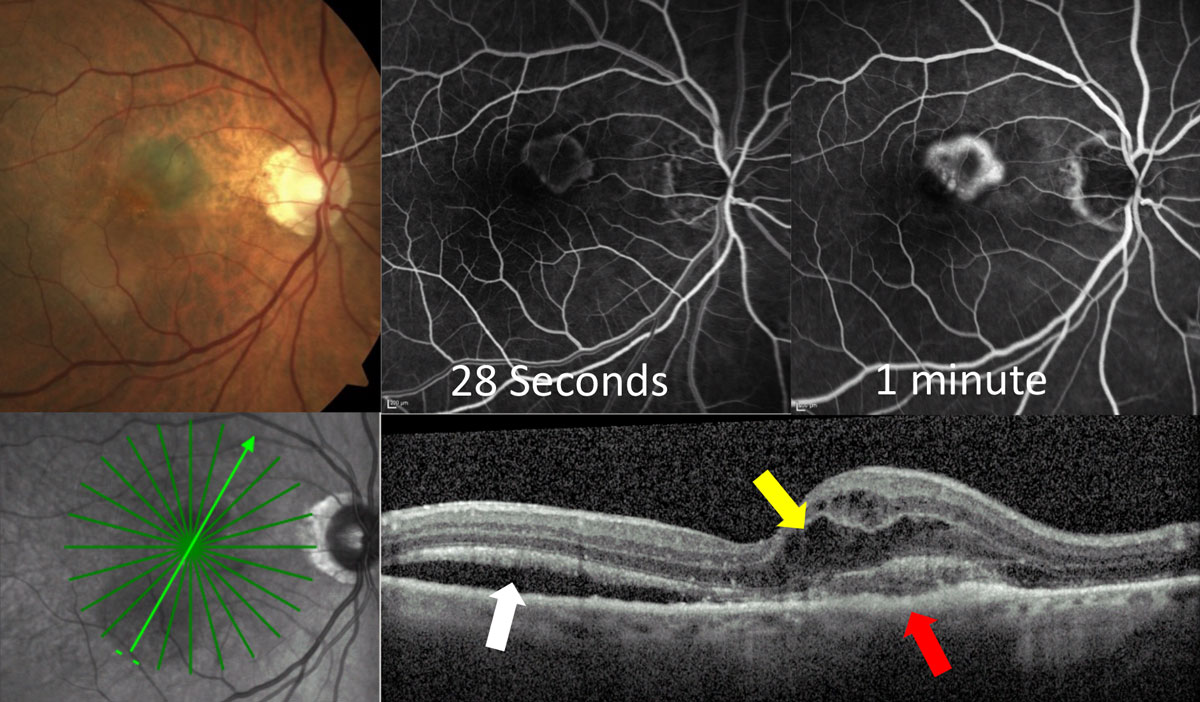 |
|
Intraretinal fluid (yellow arrow) may help predict visual acuity in nAMD. Photo: Jessica Haynes, OD. Click image to enlarge. |
One of the goals of neovascular age-related macular degeneration (nAMD) treatment is finding an anti-VEGF injection interval that successfully manages the disease and maximizes visual acuity potential while also lessening the treatment burden on the patient. To determine this, careful monitoring is needed. A recent study published in Acta Ophthalmologica examined the association between anatomical and functional outcomes in nAMD patients and confirmed that intraretinal fluid (IRF) was a cause for more aggressive treatment.
The retrospective study included 504 eyes of 504 newly diagnosed, treatment-naive nAMD patients with a minimum of 12 months of follow-up. Patients were treated with the observe-and-plan or pro-re-nata regimen. All were regularly examined throughout the study period.
The researchers reported that the presence of IRF was significantly associated with lower visual acuity at all visits but that subretinal fluid (SRF) or pigment epithelium detachment (PED) weren’t. Those in the upper quartile of central retinal thickness (CRT) variance demonstrated significantly greater visual acuity loss after 12 and 24 months.
The researchers concluded in their paper that IRF needs to be treated aggressively and that CRT stabilization is key for obtaining good visual outcomes in these patients. “Our study also shows that the presence of SRF and PED alone isn’t associated with loss of visual acuity, indicating that patients with smaller amounts of persistent SRF and/or PED who remain stable despite retreatment and where visual acuity is stable might benefit from observation with close monitoring, instead of retreatment,” they wrote in their paper. “Patients with the highest CRT variability during the study period had poorer visual outcomes after 12 and 24 months, indicating that stringent control of retinal fluid volume fluctuations is important to prevent visual acuity decline over time.”
Haji H, Gianniou C, Brynskov T, et al. Association between structural and functional treatment outcomes in neovascular age-related macular degeneration. Acta Ophthalmol. August 29, 2022. [Epub ahead of print]. |

